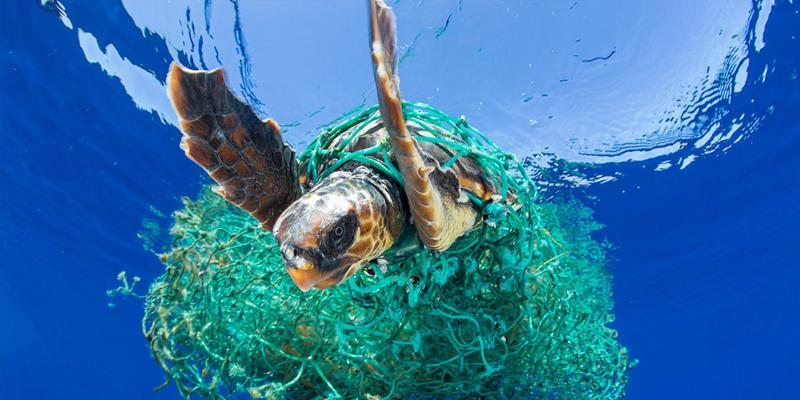 OCTOBER 24th 2018
OCTOBER 24th 2018
By Patryk Krych | The World Daily
The Great Pacific Garbage Patch – What is it, and what’s being done about it?
Many may or may not have heard over the course of this year about the great Pacific garbage patch; a large patch of garbage floating atop the Pacific Ocean, said to be twice the size of the lone star state of Texas, and reportedly containing more than 80,000 tons of plastics and garbage, located between California and Hawaii, as well as having been said to be growing at a rapid rate.
According to a study published in Scientific Reports, as well as a NOAA study of the North Pacific Subtropical Convergence Zones, the issue has grown out over 1.6 million square kilometres in length, and is not the only one, with trash said to be congregating in various amounts in many parts of the Pacific and the rest of the world’s oceans. The majority are, truthfully, made up of microplastics, but that fact in no way halts the significance or impact of the problem, as even microplastics are toxic to wildlife and the environment they are trapped in.
There are the obvious problems that come with this great Pacific garbage patch, such as marine creatures suffering poisoning and potential death due to debris ingestion and entanglement, damaging the overall ecosystem. As well as this, it has been proven on several occasions that floating plastics in the oceans accumulate pollutants and transport them through ocean through the currents.
With some of the above-mentioned study’s authors saying that "Our results suggest that ocean plastic pollution within the Great Pacific Garbage Patch is increasing exponentially," many are concerned about the overall effects and how they may worsen. Every year, it’s found that around 100,000 marine animals die due to plastic entanglement, along with approximately 1 million sea birds among the dead… And that’s only including the confirmed and found cases. With the fact that it takes the majority of plastics between 450-1000 years to fully decompose, this is not considered a problem that can be trusted to go away on its own anytime soon.
Many may have troubles believing in the great Pacific garbage patch due to a lack of proper photographs that show the entire patch, and the lack of visibility of the patch on sites such as Google Earth, even in the 2009 released Google Ocean; which allows one to view more of what lies under the water surface. Google Ocean product manager Steve Miller had sent an email to an SEO journalist that claimed “Even if we had satellite imagery, the gyre likely wouldn’t appear in it. Most of the plastic is particulate and/or a bit under the surface so you can’t see it in the imagery. A number of groups are starting to focus on collecting more data about the gyre via expeditions and sampling.”
With this explanation, it’s as simple as that; the microplastics are simply too small to be viewed, but many existing photographs have proven time and time again what a real issue this garbage patch truly is, with some scientists having already made plans, and started executing methods of getting rid of the patch, in such places as California.
In September of this year, a team of engineers and scientists began the clean-up of the plastics in the garbage patch, by launching a marine apparatus known as System 001, in the form of a large, 600 meter long floating barrier of sorts, which works by being released into the Pacific off the coast of San Francisco, to be swept along with the currents and eventually end up in and round the patch, collecting up as much plastic and garbage as it can hold. The aim is to collect 5 tonnes of plastic every month, at the very least. With 80,000 tonnes of plastic to deal with, it’s a long, but so far successful project.
Dutch inventor; Boyan Slat who founded ‘The Ocean Cleanup’ at the young age of 18 back in 2013, was the brains behind the invention of the apparatus. In the past five years, he had been testing 273 models and six different prototypes along with a team of 70 staff, before arriving at this final concluded model, which had been named “Wilson” after the ball in the Robert Zemeckis movie ‘Castaway’. The project was funded with £15.5 million from the Netherlands, allowing for the progress towards the success of the project.
After six weeks are passed, the team expect to take the apparatus back to the Netherlands to clear it out, where all the plastic will be recycled in the country. Those six weeks have yet to be up, but the apparatus is likely to be emptied and reused around December time, where its effectiveness will be fully judged and evaluated.
“Moving with wind and currents in the same way plastic does, the barrier should self-adjust once deployed. It will trap large debris before it can break down into harmful microplastics. Some 92% of plastic in the region is made up of pieces larger than 5mm so that is our focus,” explained Laurent Lebreton, an oceanographer.
One of the concentrations whilst building the apparatus was the attempt to ensure that marine life would not get caught up in the clean-up. It was designed in a way that would allow fish and sea mammals to swim under it and out of the way, but Rick Stafford, professor of marine biology and conservation at Bournemouth University, despite being all pro-project, believes that there will still be an unavoidable degree of bycatch.
“It could remove a lot of large plastics from the ocean, which is positive as long as it will not harm sea life,” he said, adding that “Fish such as tuna could get caught up in the debris. Or if turtles get pushed up into the skirt there is a chance they will end up eating the plastic.”
He also expressed some fears over the cleaning process of the apparatus, toxic anti-fouling coatings that may very well end up leaking out into the sea, but his greatest concern was also stated, regarding the implementation of the solution on society’s behaviour; “My biggest concern is that providing a potential technological solution could make us feel like we have dealt with the plastics problem – whereas in reality we need strong policy and legislation to ban disposable plastics.”
With so many aspects at play, it is generally agreed upon that the apparatus is a positive step forward towards cleaning our oceans and developing technologies that improve our methods of doing so, but the source of the problem cannot be ignored; human society’s littering. Lonneke Holierhoek, chief operating officer, had said that “We feel a sense of urgency to start cleaning up and to learn how our ideas will work in reality. But this is by no means the end of the process. We believe we can scale up pretty quickly and have a full fleet of systems in the north Pacific by 2021.”
By Patryk Krych | The World Daily






